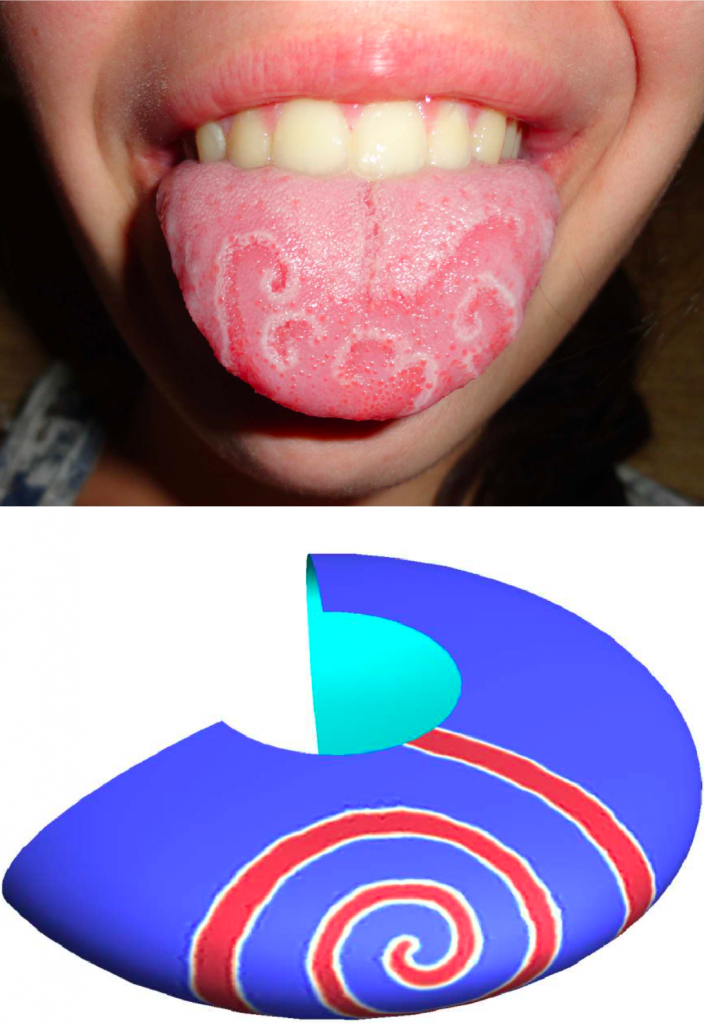The improbable email was from a pre-dental math major asking about physics research projects combining math and dentistry, but my reaction was, “Yes — only at Wooster!”. Like animated tattoos, the surface patterns of benign migratory glossitis slowly move on the human tongue. I knew my colleague Niklas Manz was working with my dentist to model them with reaction-diffusion differential equations. Eventually, the math major Margaret McGuire ’20, along with physics major Chase Fuller ’19, Niklas, and I, succeeded in modeling “geographic tongue” in an article just now appearing in the journal Chaos.
Reaction–diffusion propagation speed depends on both the curvature of the wavefront in the surface and the curvature of the surface itself. Geographic tongue promises to be a new exemplar of reaction–diffusion on curved surfaces. Our computer simulations connect reaction–diffusion processes on curved surfaces with moving patterns on the human body.



